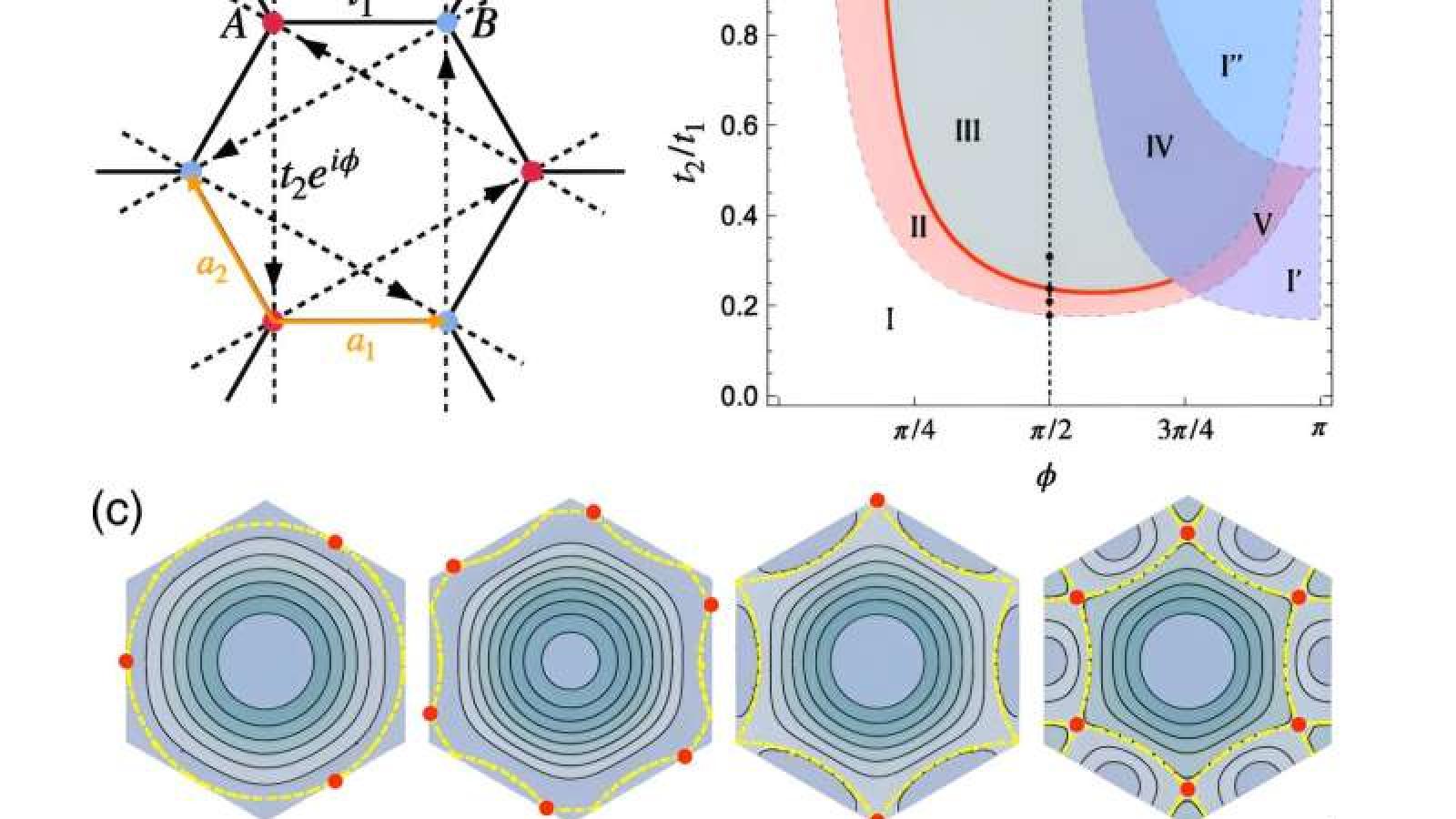Physicists open new path to an exotic form of superconductivity
Carole Clarke ("Phys.org")

Physicists have identified a mechanism for the formation of oscillating superconductivity known as pair-density waves. Physical Review Letters published the discovery, which provides new insight into an unconventional, high-temperature superconductive state seen in certain materials, including high-temperature superconductors.
"We discovered that structures known as Van Hove singularities can produce modulating, oscillating states of superconductivity," says Luiz Santos, assistant professor of physics at Emory University and senior author of the study. "Our work provides a new theoretical framework for understanding the emergence of this behavior, a phenomenon that is not well understood."
The puzzle of superconductivity
Santos is a theorist who specializes in condensed matter physics. He studies the interactions of quantum materials—tiny things such as atoms, photons and electrons—that don't behave according to the laws of classical physics.
Superconductivity, or the ability of certain materials to conduct electricity without energy loss when cooled to a super-low temperature, is one example of intriguing quantum behavior. The phenomenon was discovered in 1911 when Dutch physicist Heike Kamerlingh Onnes showed that mercury lost its electrical resistance when cooled to 4 Kelvin or minus 371 degrees Fahrenheit. That's about the temperature of Uranus, the coldest planet in the solar system.
It took scientists until 1957 to come up with an explanation for how and why superconductivity occurs. At normal temperatures, electrons roam more or less independently. They bump into other particles, causing them to shift speed and direction and dissipate energy. At low temperatures, however, electrons can organize into a new state of matter.
"They form pairs that are bound together into a collective state that behaves like a single entity," Santos explains. "You can think of them like soldiers in an army. If they are moving in isolation they are easier to deflect. But when they are marching together in lockstep it's much harder to destabilize them. This collective state carries current in a robust way."
"Everything we learn about the world has potential applications," says Emory physicist Luiz Santos, senior author of the paper. Credit: Emory University
A holy grail of physics
Superconductivity holds huge potential. In theory, it could allow for electric current to move through wires without heating them up, or losing energy. These wires could then carry far more electricity, far more efficiently.
"One of the holy grails of physics is room-temperature superconductivity that is practical enough for everyday-living applications," Santos says. "That breakthrough could change the shape of civilization."
Many physicists and engineers are working on this frontline to revolutionize how electricity gets transferred.
Meanwhile, superconductivity has already found applications. Superconducting coils power electromagnets used in magnetic resonance imaging (MRI) machines for medical diagnostics. A handful of magnetic levitation trains are now operating in the world, built on superconducting magnets that are 10 times stronger than ordinary electromagnets. The magnets repel each other when the matching poles face each other, generating a magnetic field capable of levitating and propelling a train.
The Large Hadron Collider, a particle accelerator that scientists are using to research the fundamental structure of the universe, is another example of technology that runs through superconductivity.
Superconductivity continues to be discovered in more materials, including many that are superconductive at higher temperatures.
An accidental discovery
One focus of Santos' research is how interactions between electrons can lead to forms of superconductivity that cannot be explained by the 1957 description of superconductivity. An example of this so-called exotic phenomenon is oscillating superconductivity, when the paired electrons dance in waves, changing amplitude.
In an unrelated project, Santos asked Castro to investigate specific properties of Van Hove singularities, structures where many electronic states become close in energy. Castro's project revealed that the singularities appeared to have the right kind of physics to seed oscillating superconductivity.
That sparked Santos and his collaborators to delve deeper. They uncovered a mechanism that would allow these dancing-wave states of superconductivity to arise from Van Hove singularities.
"As theoretical physicists, we want to be able to predict and classify behavior to understand how nature works," Santos says. "Then we can start to ask questions with technological relevance."
Some high-temperature superconductors—which function at temperatures about three times as cold as a household freezer—have this dancing-wave behavior. The discovery of how this behavior can emerge from Van Hove singularities provides a foundation for experimentalists to explore the realm of possibilities it presents.
"I doubt that Kamerlingh Onnes was thinking about levitation or particle accelerators when he discovered superconductivity," Santos says. "But everything we learn about the world has potential applications."
- Se connecter ou s'inscrire pour publier un commentaire
- 17 vues
Connexion utilisateur
Dans la même rubrique
06/12/2025 - 12:25
13/11/2025 - 10:20
de Philippe RICHARD
27/10/2025 - 12:20
URGéo-URBATER, Université d'État d'Haïti, Agence Kannh et le bureau d'étude et de conseils TCGNRG
22/10/2025 - 19:03
16/09/2025 - 15:48
Commentaires récents
L'antisionisme se paie cash, ma belle !
HOU LA !
Albè
15/12/2025 - 12:34
Me dit pas que t'es de la même trempe que Babette de Rozières ou Christine Kelly ! Lire la suite
L'antisionisme se paie cash, ma belle !
Albè....
Frédéric C.
15/12/2025 - 12:11
...je voulais dire "sophisme". Mais je ne suis pas créoliste alors bon... Lire la suite
L'antisionisme se paie cash, ma belle !
"SOFIS" ???
Albè
15/12/2025 - 11:58
Sa sa lé di ? Man gadé adan pliziè diksionnè kréyol mé man pa wè mo-tala !
Lire la suiteL'antisionisme se paie cash, ma belle !
No comment, Albè. Man boufi épi-w
Frédéric C.
15/12/2025 - 11:46
Ou ka plen mwen épi sé sofis-ou a!
Lire la suiteL'antisionisme se paie cash, ma belle !
NON? FREDERIC...
Albè
15/12/2025 - 09:59
Votre truc n'est ABSOLUMENT PAS du deuxième degré. Lire la suite
Top 5 des articles
Aujourd'hui :
- L'antisionisme se paie cash, ma belle !
- Les îlots Matthew et Hunter au cœur d’un conflit entre la France et le Vanuatu
- Bénin : quand l'activiste Kémi Séba s'emmêle les pédales
- Kréyolad 1105: Vizit flap flap
- Police Charge Martinique Passenger for Drug Importation; Gun and Ammunition Recovered in South
Depuis toujours :
- Tous les présidents et premiers ministres de la Caraïbe sont vaccinés
- L'intolérable appauvrissement intellectuel et culturel de la Guadeloupe et dans une moindre mesure de la Martinique !
- LETTRE OUVERTE AU 31ème PREFET FRANCAIS DE MARTINIQUE
- L'arrière-grand-père maternel de Joan Bardella était...algérien
- Les triplement vaccinés contre le covid ne bandent plus





